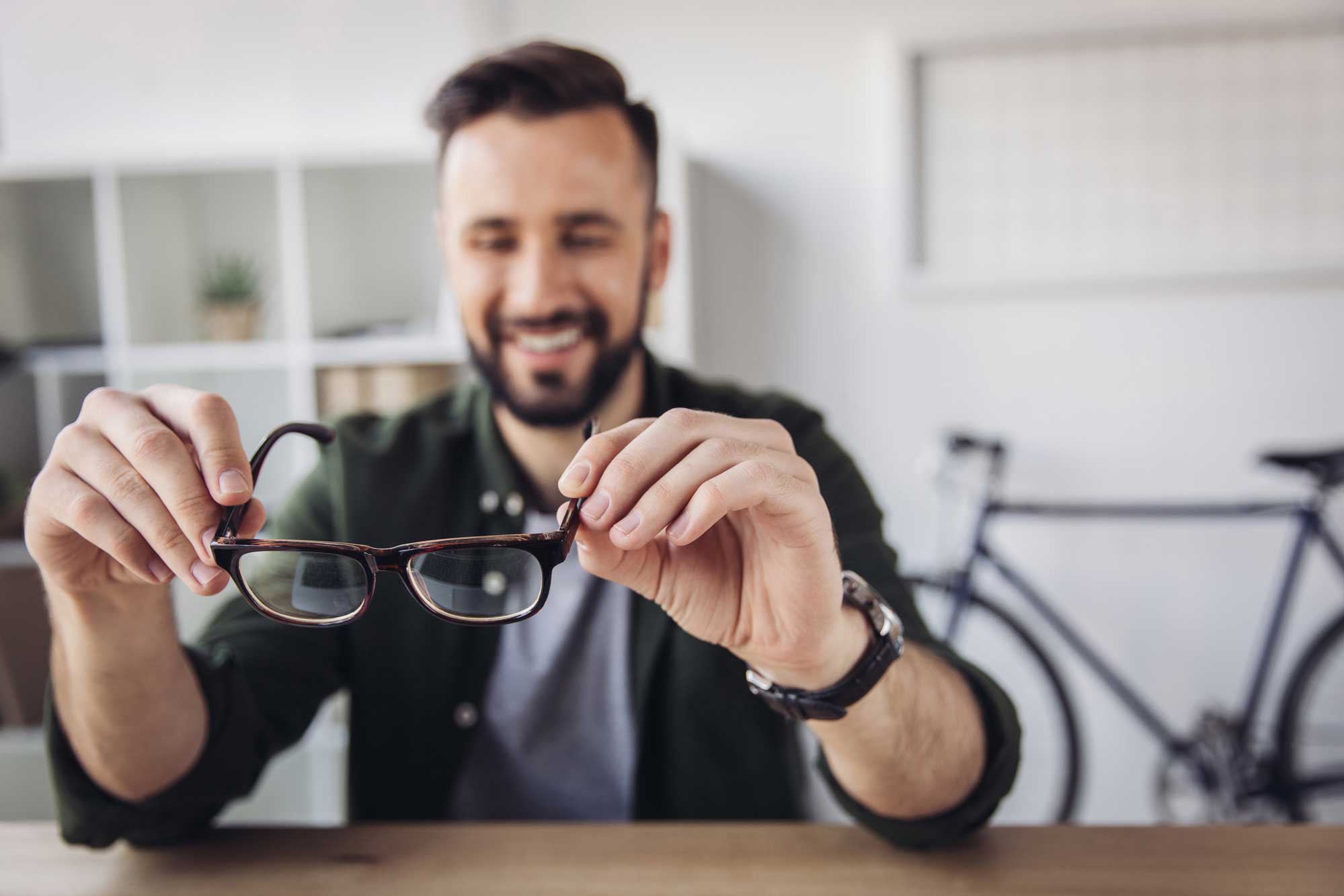Were you a curious child who never seemed to run out of questions for your parents? Why is the sky blue? What happened to dinosaurs? How do glasses work? Although we aren’t scientists or paleontologists, we can help with the question about glasses. So keep reading to entertain your inner first-grader and learn exactly how these small pieces of glass and meticulously crafted frames improve many people’s quality of life.
How Do Glasses Work?
The History of Glasses
To help you understand the complexity of glasses, we’ll start with a quick history lesson. Archeologists have traced the earliest pairs of glasses to the late thirteenth century in Italy. However, most historians credit English Friar Roger Bacon with the invention of the modern-day spectacle in the early thirteenth century. Although there isn’t any evidence that Bacon actually made a pair of spectacles, he outlines the scientific principles behind the use of corrective lenses in his book Opus Majus. So even though there isn’t any evidence supporting that Bacon actually made glasses work, he was one of the first people to have a grasp on how glasses work.
Focusing Light
The retina, located in the back of the eye, is the layer of cells that reacts to light. This reaction travels to the brain, which translates the activities of the cells into an image. When you focus your eyes on something, the light rays come together inside your eye. For individuals with perfect vision, the rays will focus on the part of your retina that produces a clear image.
The pupil and cornea shrink and focus the image, so if your pupils or cornea have an irregularity, your vision will be blurry. If you have nearsightedness or farsightedness, it means your eyes have difficulty focusing light on the spot of your retina that produces the clearest image. Glasses correct vision by allowing your eyes to focus light on the correct spot of your retina. The curved frames bend light, and with the right prescription, these frames manipulate the light to reach the correct spot on your retina. The result is a clear, crisp image.
Lenses for Nearsightedness, Farsightedness, and Astigmatism
In cases of nearsightedness and farsightedness, images you see don’t focus on the right spot of the retina. With nearsightedness, the image focuses in the front of the retina, and with farsightedness, the image focuses behind the retina. Individuals with astigmatism have an irregularly shaped cornea, which means it bends light in different directions. Your optometrist will give you a series of tests to determine what degree of nearsightedness and farsightedness you have. Next, he or she will write a specific prescription for glasses that will bend light to focus on the correct spot on your retina.
_____
How do glasses work? If you’re still wondering and you live in southwest Missouri, stop by Heffington’s. Since 1975, the Heffington family has been assisting the Springfield community with top-quality eye care and affordable eyeglasses, such as the Eyes of Faith line. This Christian brand participates in a Wear & Share® program that focuses on vision-specific mission work. Each time you buy new frames, a portion of your purchase will go toward supporting the gift of sight by funding optical missions around the world.
To learn more about our products and services, please get in touch with us online, send an e-mail to asktheexperts@heffingtons.com, or give us a call at 417-869-3937 (Optiland location) or 417-882-3937 (House of Vision location). We look forward to hearing from you!

